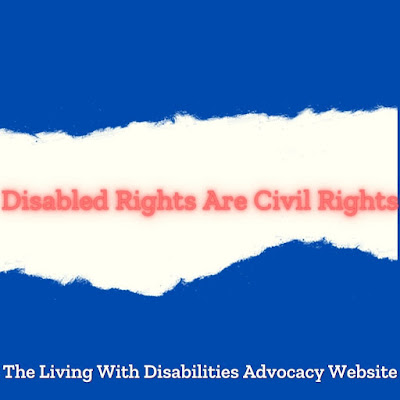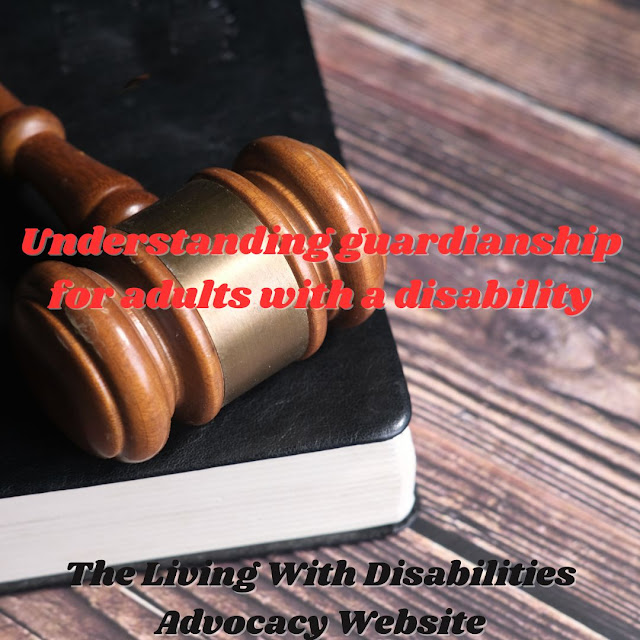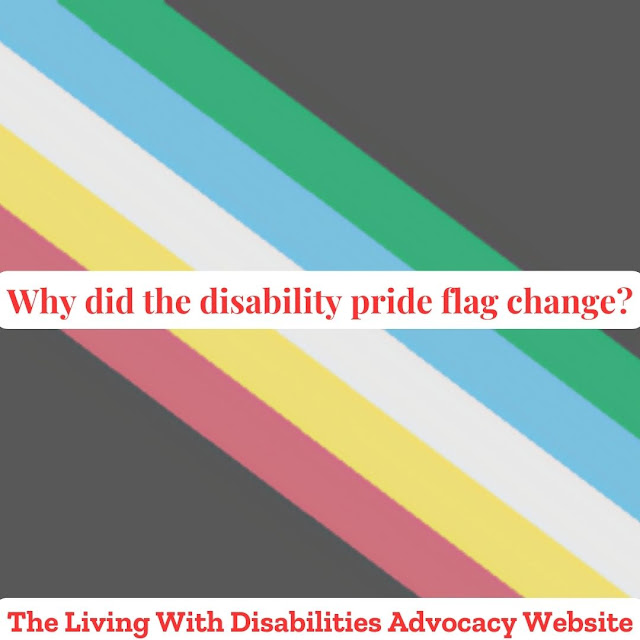Disabled Rights Are Civil Rights
Welcome to the Living With Disabilities Advocacy website. First and foremost. Self-published author Katrina Smith, a person of many accomplishments, has written six volumes in total: two cookbooks and four collections of poetry. Her favorite activities include reading and writing. Katrina would be described by one word: determined. Despite any challenges she may encounter, she does not let unkind comments decide her fate.
If you're a new visitor to this advocacy website, this page's goal is to increase public understanding of those who live with disabilities and other conditions. We suggest that anything you read on this site you seek out a licensed professional counselor or healthcare provider.
This week, Living With Disabilities will touch on the basics of disabled rights. Before we begin, please contact us if you would like to be one of the panelists on this topic, and a zoom link will be set up and sent to you as a group email.
What is the disability gap? Challenges that each person with a disability has faced globally. And each person who has a disability makes what they have learned through their experience to become an advocate to close the gap as DIYabled quotes "We are People too." Shall we allow this quote to marinate a bit before moving on with this article?
Once more, how many people can put up their hands and state that they are actively seeking employment? Your hands being raised are hidden from view. However, we are aware of your displeasure and the hurt it causes.
In this article, the government is involved in this situation. The government also includes the American Disability Act when we mention it.
The ADA was approved and signed by President George H.W. Bush on July 26, 1990. The passage of this legislation thrilled millions of people with disabilities. However, there are a few rough spots that require immediate attention.
There is still a lot of work to be done, and this situation needs to be taken seriously. For instance, a pothole in the road needs to be repaired. The same thing needs to be done here as well. And it takes a million or more people to speak out against what is happening. If anything, it is still being addressed gradually.
This ADA bill is failing miserably, so let's get to work.
How is the ADA falling short? Let's begin by stating that each state and city has encountered distinct fractures. And there are one or more things to which people everywhere can connect.
Why isn't anything being done to help people with disabilities or medical conditions succeed if they are to be treated equally? First things first, it starts with getting the proper people in the office. If there are proper people in the office, it's time to wake up and get to work because you are not in daycare.
Let's discuss vocational rehabilitation now. First and foremost, we need to applaud those working hard in vocational rehabilitation facilities and encourage others to reach their full potential. We give you a kudos badge in appreciation. Even if you made certain errors that have been brought to your attention, you still opened your door to them, listened to what they had to say, and made it possible for those who needed your help to get it.
Have you been paying attention to the clients who seek out your services and carrying out your mission in the case of vocational rehabilitation that has been laid back? It's time to get better and start listening because if you were genuinely interested in working with and supporting people who have disabilities, you would be aware of their challenges. Find a remedy for how you can make things right if you realize that someone else is bringing a poor reputation to your workplace.
Finding people who share these principles and who uphold the aim of vocational rehabilitation is crucial.
Although there are workforce programs available to help, finding a job is more difficult for those who want to live a life similar to anybody else without a disability or medical condition. Is there any room for improvement, though? Let's look for some areas of weakness and work to close the rehabilitation gap.
Are there any workforce gaps in the field of rehabilitation? As we mentioned the following in The Cracks in the Disability Rehabilitation Center for the workers there: A lot of places that have gaps in their systems need to role-play. Don't wait until it does happen because you have to be permanently in our shoes to see a change. Change it while you can.
1. Put yourself in the shoes of the individual requesting your assistance. You have been in their shoes previously, thus you ought to be able to appreciate their situation.
2. Make sure you are offering the disabled community what they need. What employment are available, for instance, that will benefit someone with a disability if you are here to help provide jobs for individuals with disabilities?
3. Pay attention to any unfavorable comments that are being made about your business. You must address a problem before you can improve.
4. Be responsive to your client's needs and politely return their calls.
People with conditions or disabilities are capable with or without accommodations, which we wish to emphasize before moving on to the next topic.
Are there any employment gaps? Some persons have expressed a desire to find employment. as well as having followed the proper procedures for submitting a job application. Therefore, we give those who perceive potential in those with disabilities or other problems appreciation badges rather than a walking ticket or a naughty smile as they leave. You allow each person to shine through their strengths by seeing past their condition or disability.
As we mentioned in vocational rehabilitation as well, Pay attention and identify your weaknesses so you can close the gap. In terms of employment, disability prejudice is the biggest barrier worldwide. Regardless of whether you work in a corporate office, you must address this issue. It's time to confront any employees who discriminate against disabled people based on race. Additionally, you don't want your clients to believe that you endorse prejudice. It will begin to negatively affect you and your company.
Make a clear distinction between diversity and the inclusion of people with disabilities. Are they accepting your disability by allowing you to participate in everything in the world? By incorporating your disability in everything, are they essentially accepting it? Persons with disabilities are people, and as we often say, "Include rather than exclude," they are people.
1. Recognize that you are not defined by the employment gap. Never let rejection weaken your resolve to get employment.
Let's hear your opinion
Have you experienced a gap in the system, and how did you bring it to the hiring manager's or your coworkers' attention? Let's discuss this topic on the Living With Disabilities Online Talk Show. Schedule an appointment to speak to Katrina Smith, the host.
If you need online support, Disability Safe Haven is great for receiving support. The We Care Team is very protective of its members and asks everyone who joins, to have a profile picture and answer the security questions.




Comments
Post a Comment